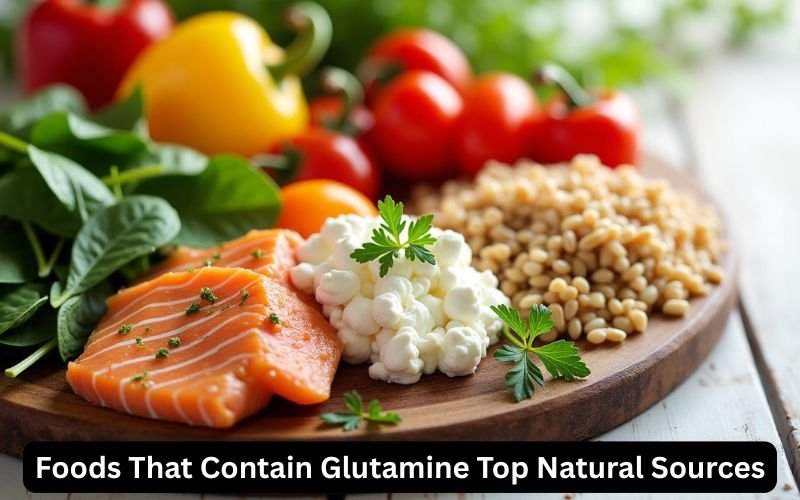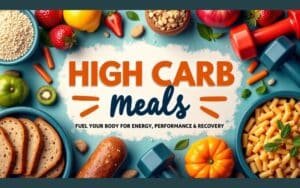Foods That Contain Glutamine: Top Natural Sources
Glutamine, an amino acid naturally produced by the body, plays a crucial role in many physiological functions, especially gut health, immune response, and muscle recovery. While the body can synthesize glutamine, under certain conditions like stress, illness, or intense exercise, dietary intake becomes essential. That’s why knowing the foods that contain glutamine is important for anyone looking to enhance their health through nutrition. This article explores the top natural sources of glutamine, how they benefit the body, and how to incorporate them into a balanced diet.
What is Glutamine and Why is It Important?
L-glutamine is a conditionally essential amino acid, meaning the body typically makes enough on its own, but in times of physiological stress, additional intake through diet becomes crucial. Glutamine is the most abundant amino acid in the bloodstream and is especially vital for:
- Intestinal health: Serves as the primary fuel for intestinal cells, promoting gut integrity.
- Immune function: Supports white blood cell production and immune response.
- Muscle repair: Helps reduce muscle soreness and supports recovery post-exercise.
Studies published in journals like Clinical Nutrition and The American Journal of Clinical Nutrition affirm glutamine’s role in healing the gut lining and supporting immune resilience.
Top Foods That Contain Glutamine
Both animal and plant-based foods can help you meet your glutamine needs. Here’s a breakdown of the best glutamine-rich foods:
Animal-Based Sources of Glutamine
| Food | Glutamine Content (approx.) | Notes |
| Beef | ~1,200 mg per 100g | Excellent source of complete protein |
| Chicken | ~1,200 mg per 100g | Lean protein, ideal for muscle support |
| Fish (e.g., Salmon) | ~1,000 mg per 100g | Also rich in omega-3s |
| Eggs | ~700 mg per 100g | Versatile and nutrient-dense |
| Milk | ~500 mg per 100g | Also a good source of calcium |
| Yogurt | ~500 mg per 100g | Supports gut microbiota alongside glutamine |
Plant-Based Sources of Glutamine
| Food | Glutamine Content (approx.) | Notes |
| Tofu | ~600 mg per 100g | Ideal for vegetarians and vegans |
| Lentils | ~300 mg per 100g | High in fiber and iron too |
| Beans (kidney, black) | ~300 mg per 100g | Plant protein plus prebiotic fiber |
| Spinach | ~300 mg per 100g | Supports detox and digestion |
| Cabbage | ~200 mg per 100g | Known for gut-healing properties |
| Beets | ~150 mg per 100g | Good for nitric oxide and energy |
These glutamine-rich foods offer not only amino acids but also essential vitamins, minerals, and antioxidants.
Glutamine in a Balanced Diet

Incorporating natural sources of glutamine into your meals is easier than you think:
- Add spinach or cabbage to soups and stir-fries.
- Use tofu or lentils in curries and salads.
- Include a serving of yogurt with breakfast or as a snack.
- Combine grilled chicken or salmon with leafy greens.
Tips for Special Diets
- Athletes: Combine glutamine-rich meals with complex carbs post-workout for better recovery.
- Vegetarians: Pair beans and tofu with whole grains for a complete amino acid profile.
- Digestive issues: Start with cooked vegetables (like cabbage) which are easier to digest.
Who Needs More Glutamine?
Certain groups may require higher dietary intake of glutamine:
- Athletes and bodybuilders with intense training routines.
- Patients recovering from surgery, burns, or illness.
- Individuals with gut disorders like IBS or leaky gut.
- People under chronic stress, which depletes glutamine reserves.
Food vs. Supplements
While glutamine supplements are available, whole foods are generally safer, more bioavailable, and provide additional nutrients. Supplements may be considered under professional guidance, especially for medical or athletic purposes.
Frequently Asked Questions
What fruits are high in glutamine?
Most fruits are not significant sources of glutamine. However, small amounts may be present in watermelon and papaya. For higher intake, focus on protein-rich plant and animal foods.
Can I get enough glutamine from diet alone?
Yes, a well-balanced diet rich in protein (both plant and animal) can usually meet your glutamine needs without supplements.
Is glutamine safe for daily consumption?
Yes, consuming glutamine in a diet through natural food sources is safe and beneficial for most people.
What vegetables have the most glutamine?
Spinach, cabbage, and beets are among the top plant-based glutamine sources.
Conclusion
Including a variety of foods that contain glutamine in your daily meals can support digestion, immunity, and muscle function. Animal-based sources like chicken, eggs, and dairy provide high levels of glutamine, while plant-based options like tofu, lentils, and spinach make it accessible to vegetarians. For most people, natural foods are the best way to reap the glutamine benefits without relying on supplements.
Internal linking suggestions:
- Related article: [Complete Guide to Amino Acids in Protein Sources]
- Learn more: [Top Gut-Healing Foods You Should Try]
- Explore: [Plant-Based Proteins for Muscle Growth]









Add comment
You must be logged in to post a comment.